Why does antifreeze decrease. What to do if antifreeze leaves: why and where coolant flows out of the expansion tank, how to identify and fix a leak
Today, a serious issue that many motorists suffer from is that it often happens that antifreeze leaves expansion tank, but where it is not known, there are no smudges, no drops under the car! But in the expansion tank, the level treacherously falls every day! Just some miracles, what to do and why this happens. Let's figure it out...
I want to warn you right away - if antifreeze leaves the tank, and it doesn’t flow anywhere, that is, the system seems to be in perfect order - this is a bad sign and it entails serious damage. You can't drive this car! Every kilometer leads you to an overhaul of the engine, and even worse, it can simply jam.
So if you can’t determine for yourself, we urgently go to the service station - let the professionals look.
To begin with, I want to think - what can flow, that is, obvious problems that can be eliminated.
Apparent Downgrading Issues
Not entirely relevant to our question, but worth mentioning. This needs to be checked first, and if you have not identified the reasons, then we will dig deeper. So, antifreeze can leave due to a leak in the system, let's analyze it point by point:
- Leaking engine radiator . Of course, this is determined very quickly, just look at it, and also look at the streaks under the car, if it is leaky, there will be drops. Of course, you can try to solder or clamp the radiator tubes, but the plastic component (sidewalls) is often damaged, nothing can be done here, a replacement is needed.
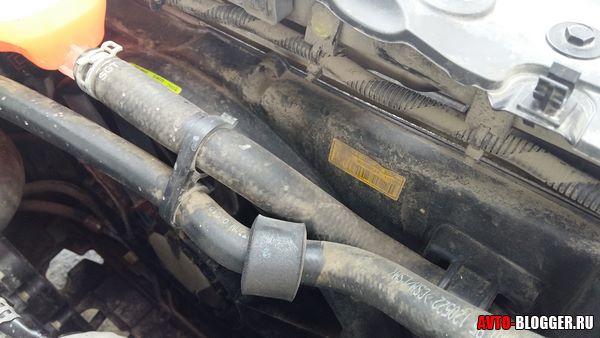
- stove radiator . Almost the same picture, only the interior heater is leaking, it is more difficult to diagnose, because the coolant will drip onto the seal (carpet) in the cabin. But the reasons for the definition are simple, if it smells of antifreeze in the cabin (sweet smell), but not outside. If the glasses sweat even in dry weather, and the coating on the glasses is oily. Liquid is leaving the tank, which means you have covered the heater radiator, of course, if you remove the plastic (decorative) protection of the instrument panel, you will see that it is dripping somewhere. We do the same, either we restore it, or if it is impossible, we change it.
- Hoses . From time to time they wear out, because each time they expand (when the engine heats up) and narrows (when it cools down), sooner or later such work will damage them, they will not be able to hold pressure and will break them. Of course, there may be minimal damage, but the leak will be constant. It is useless to make hoses, it is better to replace them.
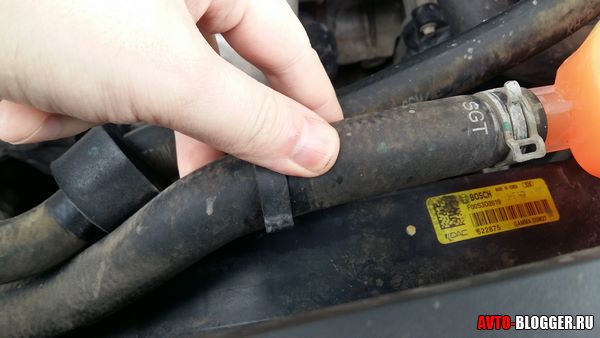
- tubes . The situation is the same as with hoses, they are metal here and usually go for a long time. But there are situations when they also occur.
- thermostat and pump . These are two mechanisms that are designed to pump and regulate the flow of coolant, the cases are made of metal or plastic and often they flow, it happens from time to time. Under replacement, they are practically not repaired.
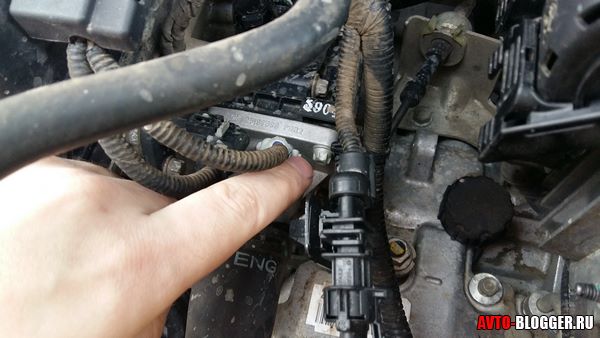
- Expansion tank cap and tank itself. , after a certain mileage, it also fails, if it does not hold pressure, then the antifreeze from the expansion tank can splash out when heated. The tank itself can also burst, because it is made of plastic, if the lid is faulty, it can break. Under replacement.
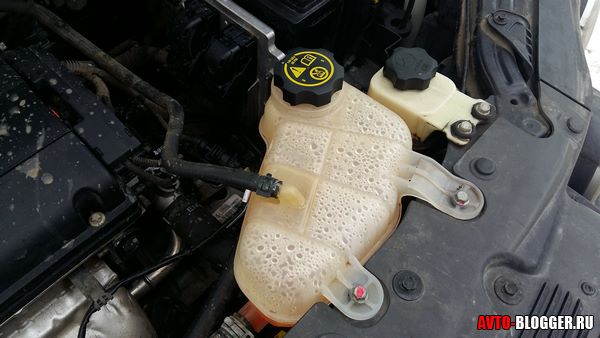
These are obvious reasons, they should be checked first of all - MANDATORY! It often happens that the driver is looking for and cannot find, and the antifreeze (antifreeze) goes, say, into the stove and then into the salon, it is quite difficult to immediately determine. Put the car on a dry area or in the garage, if possible, and watch if there are stains in the color of your coolant, then this is definitely a leak, look for it!
Hidden Problems
You climbed everything and everything, it doesn’t flow anywhere, all the hoses and clamps are in order, but the antifreeze or antifreeze goes away, “even if you crack”! The fact is that there are not only open leaks, but also so-called hidden ones, and they are much more dangerous.
The car engine is not a cast structure - there is a separate engine block and block head. Between these two parts there is a gasket, this is a must, it is high-temperature (it can hold high plus values), it is also a sealing link. In the engine block, as well as in the head of the block, there are channels - through which antifreeze (antifreeze) passes, cooling the metal, so the "whole motor" is in operating temperature, which does not exceed 90 - 100 degrees Celsius, without this fluid the engine would warm up very quickly and it would simply jam.
So the coolant also passes through the gasket, since it is an intermediate link (by the way, it has special channels). If the gasket is defective or poorly tightened, then the tightness of the channels is broken, and the coolant can pass into the engine cylinders. That is, it enters the combustion chamber, then through this chamber it will exit into the exhaust pipe, while the level of antifreeze (antifreeze) will decrease in the expansion tank.
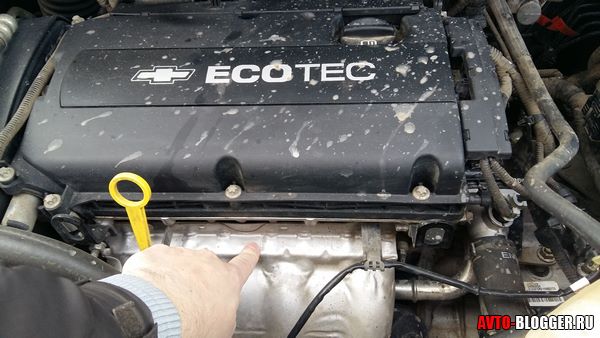
What are the signs of such a breakdown?
- It's white and thick smoke from exhaust pipe, it will be really like fog - .
- will grow.
- The oil will be interspersed with antifreeze or antifreeze, that is, with bubbles.
- The coolant will leave the tank, and constantly.
In this case, this is a 100% gasket, we must change it. After all, sometimes antifreeze or antifreeze can get into engine oil, and this is serious! Here to "" is a stone's throw away.
Because:
- The oil mixes with the liquid and forms an incomprehensible "slurry", it will begin to curl up, which will clog all channels - it is provided.
- It will not be able to properly lubricate the engine cylinders, this will lead to wear of the piston rings.
- Also, this substance will clog all the channels on the crankshaft, which will also increase its wear, the liners in which it rotates can simply turn.
Bottom line - if antifreeze or antifreeze goes into the engine, it is forbidden to drive!
This is reason number "1", however, antifreeze can also come through various channels of the cooling system. They also have gaskets attached to the engine block and when worn, leaks occur.
Troubleshooting
We will analyze the hidden defect when it is necessary to change the engine gasket. You can’t delay with this, despite all the apparent complexity of the process - almost everyone can repeat it.
- We purchase a gasket for your engine, make no mistake, this is important! It is advisable to choose by VIN - CODE
- Why do we remove the block head cover, usually from 8 to 12 bolts. Most likely, you will need to remove all kinds of pipes and other “air filters” fixed above it so as not to interfere.
- After you need to unscrew the head of the block itself, here you will need to try, as a rule, tighten the bolts strongly, if one of them is unscrewed easily, then most likely it is in it, it was simply not extended at the factory! It is quite possible that after the broach, the antifreeze will stop leaving the system! So first try to stretch all the bolts.
- If that doesn't work, remove the head. As a rule, the leak will be immediately visible, it is either a crack or streaks. I would also like to note that the gasket is disposable, you can’t do it in such a way that you unscrew the head once, for various reasons, and then put it on the old gasket. The thing is that it misses - so you need to put only a new one.
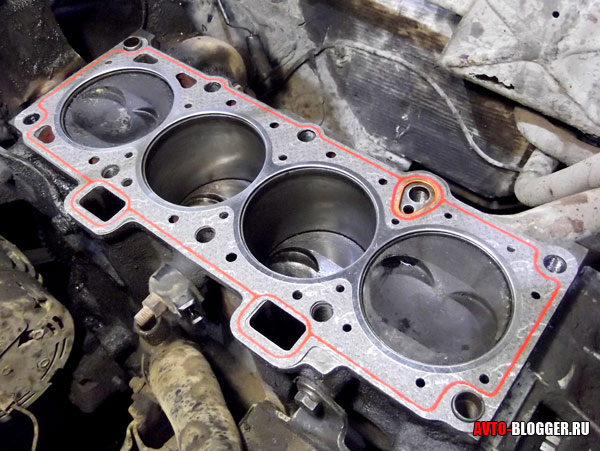
- After replacing, we collect everything in the reverse order. It is necessary to pay special attention to the tightening of the head of the block, it is done in a checkerboard pattern, with a certain force, which is regulated by a pressure gauge.
Personally, I myself eliminated a couple of times, thus this breakdown, on our VAZ and on the GAZELLE. Antifreeze or antifreeze will stop leaving.
Wow, I wrote a lot, but these are almost all the reasons why a leak can occur. Of course, the block itself may burst, that is, it will drive out from under the metal, but this happens extremely rarely, I think 1 per 10,000 cars, and maybe less often.
If someone does not understand something, watch the video version of the article.
On this I end, I think it was useful.
Antifreeze- This is a coolant designed for the cooling system of a car engine. In the article, we will consider the reasons, and what should be done if the antifreeze leaves the expansion tank, using the example of a VAZ 2110 car.
What you need to know about the expansion tank
In the first cars, the engine was protected from overheating with water, but this method did not take root, because through a short time I had to repeat the procedure and the metal parts of the motor became unusable.
After the invention of special liquids based on ethylene glycol, which has a certain expansion coefficient, it was necessary to come up with a container for removing excess of this very liquid. This is how the expansion tank was born.
It is necessary from time to time to control the coolant level in the tank, otherwise, if there is not enough liquid or, on the contrary, excess, this can lead to engine failure.
Fluid in the expansion tank
Experienced drivers are aware of the purpose of the fluid in the expansion tank, but beginners and especially girl drivers may not even be aware of its presence.
Antifreeze is a liquid that is designed primarily to maintain a certain temperature inside the car's engine, and also performs the function of protecting against overheating or vice versa, freezing, corrosion, and rapid rusting of metal parts. If there is a drop in the level of antifreeze in the expansion tank, then most systems, and in particular the engine, will not be able to work. Below we will consider why antifreeze leaves in the VAZ 2110, and how to solve the problem.
Why coolant leaves and problem solving
Reasons for throwing antifreeze
Consider the main reasons why antifreeze leaves the expansion tank. One of the main ones may be that the parts of the cooling system have deteriorated after prolonged use. Due to the fact that pipes, various hoses and tubes, gaskets are constantly exposed to high pressure during engine operation, and it is natural that they wear out and break. Therefore, it can be identified as the cause - depressurization of the main parts of the cooling system.
Another reason may be that sometimes even a new tank may have chips and cracks (both on the tank itself and on the lid). Because of this, their loose contact occurs and the antifreeze disappears from the expansion tank.
The third reason may be that the coolant tank itself is defective or made of poor quality materials.
Also, in the case when the radiator or thermostat has become unusable, then due to the high pressure acting inside the engine, antifreeze can be thrown out of the tank. Pay attention also to the operation of the pump that supplies fluid into the system. If for any reason it is in a faulty state, then the antifreeze leaves.
By remembering the above points regarding the care of antifreeze, you can prevent this problem in time.
Signs of the disappearance of antifreeze
Having considered and remembered the main reasons for the disappearance of antifreeze, we will also deal with the signs by which it will be possible to determine the presence of a malfunction.
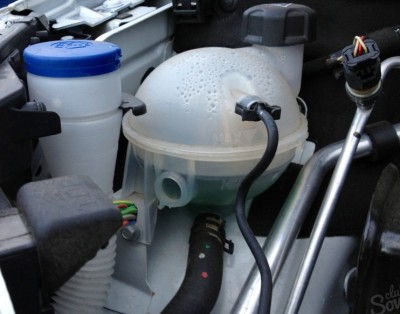 Firstly, if the antifreeze leaves the expansion tank, you will almost immediately feel a sweet smell inside the interior of your vehicle. Secondly, perhaps the most obvious a sign of a large coolant leak is the presence of a characteristic spot under the car body. Thirdly, if a certain amount of coolant enters the car engine directly, the exhaust gases will have a characteristic white color. The fourth sign is that when the pump fails, you may notice increased moisture under the belt guard.
Firstly, if the antifreeze leaves the expansion tank, you will almost immediately feel a sweet smell inside the interior of your vehicle. Secondly, perhaps the most obvious a sign of a large coolant leak is the presence of a characteristic spot under the car body. Thirdly, if a certain amount of coolant enters the car engine directly, the exhaust gases will have a characteristic white color. The fourth sign is that when the pump fails, you may notice increased moisture under the belt guard.
In the event that the liquid is already boiling, first of all, the sensor will have overestimated temperature readings. Even with a significant jump in the level of antifreeze in the expansion tank, it is directly thrown out.
And finally the most unpleasant sign of coolant leaving the expansion tank is the cessation of the engine itself. To prevent this from happening to your car at the most inopportune moment, pay attention in time to extraneous noises, knocks, non-characteristic smells and colors that occur during the operation of the car. Carry out timely repairs and, if necessary, replace all parts and assemblies of your vehicle that have become unusable.
How to solve a problem
If you know why the antifreeze leaves the expansion tank, then this can be said to be the solution to half the problem. But, in addition to everything, it is also necessary to be able to prevent the appearance of this very unpleasant situation in time.
To prevent antifreeze from being thrown out of the expansion tank, you should:
- check all parts and mechanisms for defects and, if necessary, replace them with new ones;
- try not to use parts that were previously used and seem to be still working;
- all pipes must be crimped with clamps only on springs;
- if the antifreeze leaves the expansion tank, then it is also necessary to check if the cover is depressurized;
- clean the tank cap from rust and scale in time;
- it is also necessary to check the pipes located directly on the expansion tank, that is, those with which it is connected directly to the radiator;
- if, nevertheless, the problem is not identified and everything is in order, then check the expansion tank itself for cracks and chips.
The efficiency of the cooling system has great importance: if the car engine is not cooled enough, it can quickly fail, and then it will be necessary to overhaul. Most often, the overheating of the internal combustion engine occurs due to the lack of liquid in the cooling system, why the antifreeze leaves the expansion tank, it is difficult to answer unambiguously right away, there are various reasons.
If there are malfunctions in the car, mostly car owners turn to a car service, believing that it will not be possible to deal with the problems of an automobile motor on their own. But quite often you can eliminate the defect with your own hands, for example, when a pipe is leaking, or the bypass valve of the radiator plug (expansion tank) is faulty.
In this article, we will consider the causes of a coolant (coolant) leak, where it can go, how to diagnose the cooling system (OS), what minor repairs can be done without resorting to car services. And having dealt with the breakdown, you yourself will decide whether you need to give the car to a service station, or you can restore the car's performance yourself.
Where does the antifreeze go from the radiator
According to the laws of physics, not a single substance can disappear without a trace, the same applies to coolants (antifreeze or antifreeze). Where the liquid can go (there are three options):
- leak out through a torn pipe, a loose connection or a thin radiator;
- turn into steam from high temperature;
- get into the engine through a leaky head gasket.
In any case, traces of coolant will be noticeable, even if the antifreeze has evaporated through the radiator plug. When the liquid leaves the OS a little, it is not difficult to add it, but you still need to deal with the reason for the disappearance of antifreeze. It may happen that at some point the leak will noticeably increase, there will be very little antifreeze in the OS, and then overheating is almost inevitable.
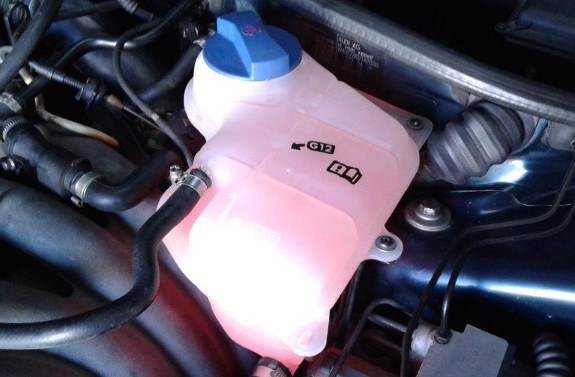
Reasons for the disappearance of fluid from the cooling system
Why antifreeze leaves, there can be quite a few reasons, the main ones are:
- leakage of the OS - the clamp is poorly tightened, the pipe is torn, the radiator hoses have not changed for a long time, so the rubber has become hard, etc .;
- the expansion tank plug valve does not work, because of this, excessive pressure is created in the cooling system, antifreeze in the form of steam is expelled from the system;
- for various reasons, the engine constantly overheats, the antifreeze boils and also turns into steam;
- the head gasket is broken, the coolant enters the oil sump or cylinders through a leaky seal;
- there is a crack in the block head.
If it is quite simple to deal with external leakage of antifreeze, the situation is more complicated with overheating of the internal combustion engine, in this case, indeed, help may be needed professional craftsmen. But, when determining the malfunction on your own, you should always carry out diagnostics, guided by the principle “from simple to complex”, you must first check whether the coolant is flowing from the outside. And it doesn’t matter what car you have - Subaru Impreza or VAZ-2114, liquid-cooled engines differ only in design and have typical malfunctions.
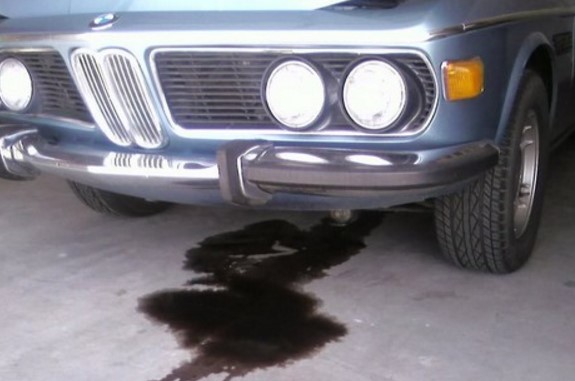
Where to start diagnosing the cooling system
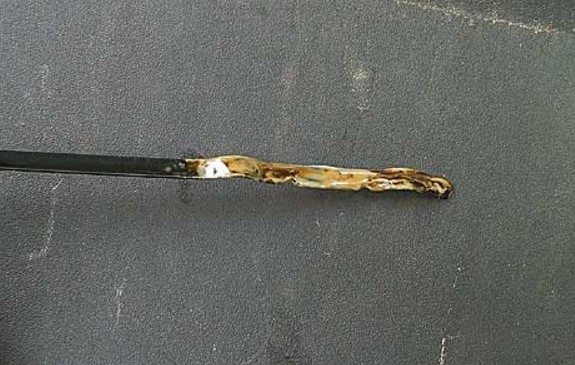
On many Opel, Chevrolet, VAZ (Lada Kalina, Priora, 2108-15) cars, quite often the cause of increased pressure in the cooling system is a jammed expansion tank cap valve, an inoperative thermostat. If the liquid leaks in very small quantities, you can check the tightness of the system by creating pressure in it, for example, using a conventional tire pump.
Expansion bottle valve test with pressure
The valve on the tank cap serves to regulate the pressure in the OS; when a certain level is reached, it must open and let excess air out. The pressure may differ depending on the car model, usually the valve mechanism is triggered at values from 1.0 to 1.5 kgf cm².
Using a pressure gauge and a pump, the pressure valve is checked both as part of the machine and on the removed expansion tank. The second option is preferable, since, using the first method, you can accidentally fill the entire engine compartment with antifreeze. Consider how the performance of the expansion tank valve is checked using the example of the Chevrolet Lacetti:
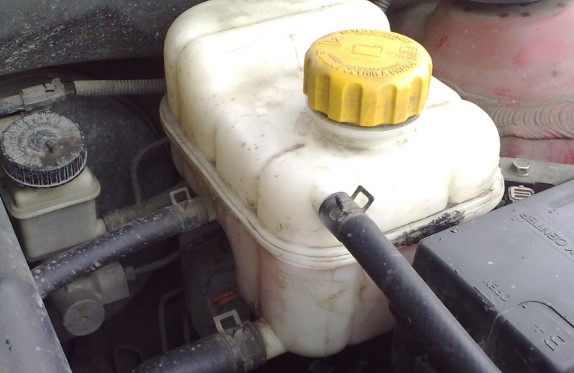
If the valve mechanism of the expansion tank does not work, the pressure will rise higher and higher when pumped up by the pump. It is not worth pumping more than 2 atm, it is better to replace the defective part immediately, some car owners or craftsmen manage to repair it.
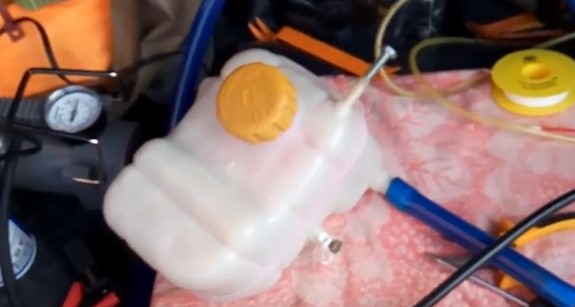
Opel expansion tank valve repair
On many Opel cars, an expansion tank cap with two valves (GM 001834583) is installed, one of them is inlet and does not allow the pressure to drop below normal when rarefied. The second of the valves is the exhaust, it is he who often works too late, the reason for this is a very stiff spring. To make the valve mechanism move softer, the spring should be cut, for this you need to dismantle the parts from the cover. We repair as follows:
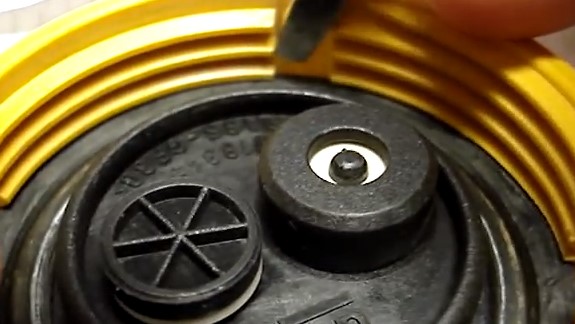
If the expansion tank will still swell, you can still cut the spring by half a turn. Usually this method helps well, often plugs with two valves are installed not only on Opel, but also on Lada Kalina.
Checking Antifreeze Leaks Using Pressurization
By pressurizing the pump in the cooling system, you can check not only the operation of the valve, but also the tightness of the OS, and detect leaks, if any. For such a check, the expansion tank does not need to be removed from the car, we perform the operations in the sequence:
- to release excess air, loosen the cork slightly, then tighten it again tightly;
- disconnect the outlet (return) pipe from the tank;
- install a plug on the removed hose;
- we connect the pump hose to the “return” fitting of the tank;
- pumping air.
If the pressure gauge needle does not rise when pumping air with the pump, this means that the valve is leaking and should be replaced. If the valve mechanism is in good order, we apply a working pressure of 1.0-1.5 atm (until the valve operates), after waiting for a while, we inspect the engine, radiator and pipes for tightness.
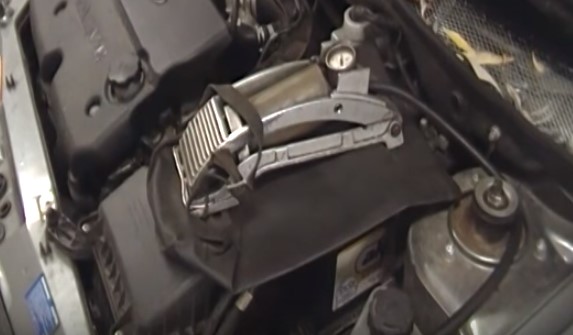
Leaking antifreeze due to a faulty thermostat
The purpose of the thermostat is to regulate the temperature of the coolant so that the engine warms up faster, this device makes the antifreeze move in a small circle. When a certain temperature is reached, the thermostat valve opens, and the coolant begins to circulate through big circle. If the thermostat sticks in the closed position, overheating occurs, excess pressure is created, the liquid boils and splashes out through the filler plug, the expansion tank itself swells. Another defect of this element of the cooling system is the leakage of the housing, if the design is collapsible, in many cases the leak is eliminated by replacing the gasket.

The easiest way to diagnose a thermostat when the engine overheats is to check the heating of the pipes, if all the radiator hoses are hot, the thermostat is working, and you need to look for another cause of the defect. But the valve of this device can operate at too high a temperature; for an accurate check, the removed thermostat is placed in a container of water, heated to a boil, and the valve opening threshold is checked with a thermometer.
Antifreeze leak due to a broken head gasket
If the cylinder head gasket is broken, the antifreeze from the OS will also decrease, moreover, the liquid does not always go into the oil sump, it can enter the cylinder, and then fly out of the muffler together with the exhaust gases. But in any case, with a broken PGBC:
- the engine is trimming, or one (two) cylinders do not work completely;
- traction worsens;
- detonation appears;
- the engine is overheating.
If the gasket has just begun to "poison", all these signs are almost imperceptible, but the car still loses power to some extent, the engine heats up, the coolant gradually leaves. The main signs of a broken gasket:
- thick White smoke from the muffler pipe on a warmed-up internal combustion engine;
- cleanly washed spark plug electrodes of a non-working cylinder;
- emulsion instead of engine oil;
- constant ejection of antifreeze from the expansion tank;
- presence of air bubbles in the coolant.
In the absence of certain experience, it is not worth taking on the replacement of PGBTs, there are many nuances here that you may not know about. The fact is that with a broken gasket, the surface of the block head can be deformed, the cylinder head can burn out in the area of \u200b\u200bthe combustion chamber, the partition on the block between the cylinders, often when overheated, the piston rings “sit down”.
![]()
Only an experienced specialist can determine the condition of the engine after a breakdown of the gasket, and it is not always possible to “get off” only by replacing it; after the motor overheats, even a major overhaul may be required.
Original German autobuffers Power GuardAutobuffers - save money on suspension repairs, increase ground clearance+3 cm, quick and easy installation...
Official website >>>
On a VAZ 2114 car, the coolant is replaced every 3 years or 60,000 kilometers. If you do not follow these standards recommended by the car manufacturer, there is a risk of antifreeze leakage from the system and a gradual failure of the engine. How to properly drain and replace antifreeze and where it can leave the VAZ 2114 cooling system, we will describe in detail in this article.
1 Do-it-yourself replacement of coolant on a VAZ 2114
Before draining the antifreeze from the system, make sure that the expansion tank cap is screwed onmaximumtight, and the car's engine is completely cold. Next, the car must be installed on a flat surface (inspection hole or overpass), and in the absence of such, slightly raise the front of the car using jacks. To properly drain the antifreeze from the radiator and engine system, you must perform the following steps:
- Disconnect the negative terminal from the battery.
- Remove the plastic engine protection by unscrewing the 4 mounting bolts with a 13" wrench.
- Move the heating stove lever in the passenger compartment to the right as far as it will go and open the heater tap.
- Unscrew the plug of the expansion tank (only on a cold engine).
- Place a plastic or other container under the radiator into which you want to drain the antifreeze.
- Loosen the hose clamp from the throttle assembly.
- Unscrew the fluid drain screw under the radiator, let the antifreeze flow into the container for about 10 minutes.
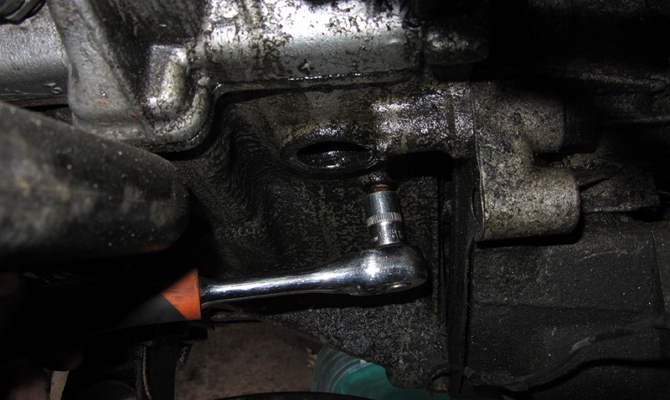
After that, it is necessary to drain the liquid from the engine in a similar way. To do this, find the cylinder block drain nut and use a 13 wrench to loosen it. The part is located under the ignition module, which can also be dismantled for greater convenience, but this is not necessary. After that, let the liquid flow for 10 minutes, and then screw all the plugs and fasteners back.
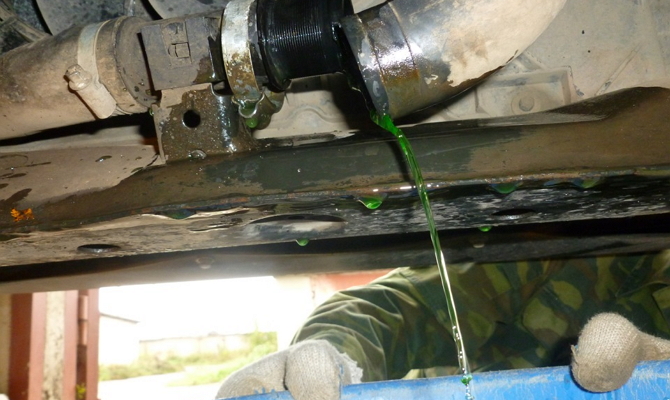
The fluid in the VAZ 2114 cooling system is replaced according to the following scheme:
- Loosen the clamp and disconnect the hose that supplies fluid from the throttle assembly.
- Unscrew the cap of the expansion tank and fill in new antifreeze to the middle mark between "Min" and "Max".
- Tighten the hose clamp from the throttle assembly and the tank cap.
- If the ignition module was removed, install it back.
- Connect the negative terminal on the battery.
- Start the engine and let it warm up.
- In the event of an air lock, re-disconnect the throttle hose and add fluid to the reservoir up to the "Max" mark.
2 How to identify malfunctions due to which the coolant is leaving?
Many owners of the VAZ 2114 often complain that the antifreeze is disappearing somewhere from the cooling system. Where does he go? The most common causes of such a malfunction:
- expansion tank cracks
- insufficient reliability of system connections,
- defects on hoses and pipes,
- thermostat gasket wear
- dirty and faulty radiator,
- antifreeze getting into engine oil.
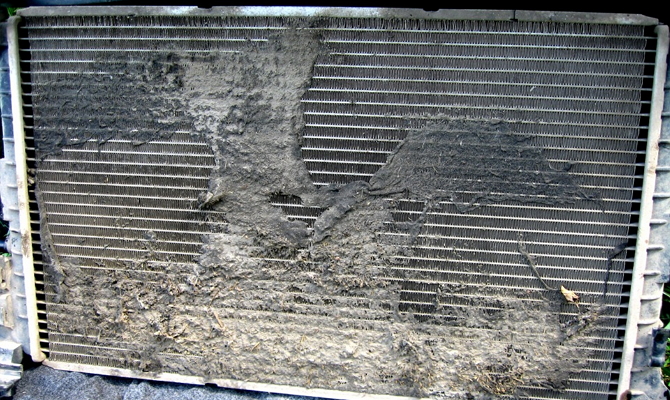
The last point is worth considering in more detail, since such a leak is the greatest danger to the engine. If antifreeze flows into the oil, then the color of the exhaust gases changes first. Rich and thick white smoke begins to come out of the pipe, which is more like steam. In addition, the fact that the antifreeze goes into the engine oil is also indicated by the changed color on the dipstick, especially if the oil has recently changed.
If antifreeze is poured into the VAZ 2114 cooling system, then a leak into the oil detected at first will not lead to serious consequences in the operation of the motor.
IT IS IMPORTANT TO KNOW!
Every motorist should have such a universal device for diagnosing his car. Now without an autoscanner just nowhere!
Read, reset, analyze all sensors and configure on-board computer car you can independently with the help of a special scanner ...
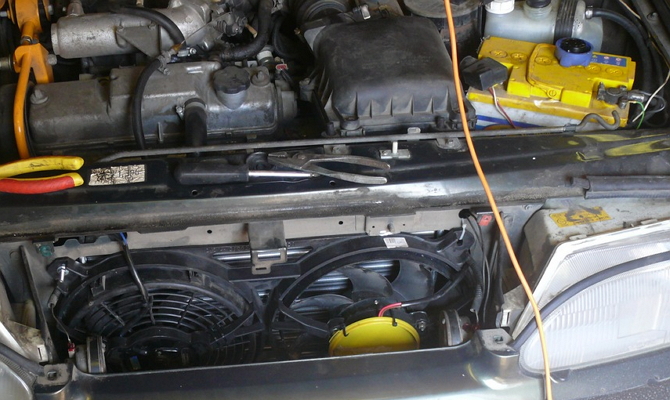
But if antifreeze was poured into the system, diluted in a certain proportion with water, and it is it that flows, then there is a huge probability of engine overheating and even failure of the cylinder head, the replacement of which is much more financially expensive than replacing antifreeze.
3 Visual inspection of the engine cooling system
Sometimes a change in the liquid level in the expansion tank is a consequence of its decrease in volume, especially if we are talking about the winter period of operation of the car.

Then there are no problems in the cooling system and it is only recommended to systematically add coolant to the reservoir to the desired level. As mentioned above, antifreeze also leaves due to damage to pipes, puffs and clamps, especially at the junction with the system heat exchanger. To check where and where exactly the antifreeze goes, you can put it under the hood of the car Blank sheet cardboard or paper, and then start the engine for 20-30 minutes. By drops on paper, it will be possible to determine clear places where liquid has entered and places of depressurization or loosening of fasteners, since they will have characteristic leak marks.
If the above methods of elimination have already been tried, and the antifreeze continues to go somewhere, carefully inspect the hose at the junction of the thermostat and radiator - if there is liquid there, then the problem is in it. In this case, the hose is replaced with a new one, or a new fastening clamp is installed slightly higher than the previous one. If the problem persists, you need to look further; in some cases, the thermostat gasket needs to be replaced.
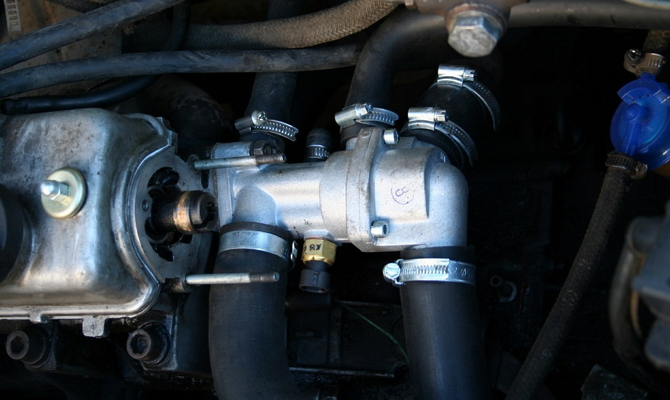
And most importantly, fill in the cooling system only with the liquid recommended by the manufacturer, you should not experiment - this may lead to the need to replace some elements of the system.
Do you still think that car diagnostics is difficult?
If you are reading these lines, then you have an interest in doing something yourself in the car and really save because you already know that:
- Service stations break a lot of money for simple computer diagnostics
- To find out the mistake you need to go to specialists
- Simple wrenches work in the services, but you can’t find a good specialist
And of course you are tired of throwing money away, and it’s out of the question to ride around the service station all the time, then you need a simple ELM327 AUTO SCANNER that connects to any car and through a regular smartphone you will always find a problem, pay off the CHECK and save a lot! !!
We have tested this scanner ourselves on different machines and he showed excellent results, now we recommend him to EVERYONE! So that you do not fall for a Chinese fake, we publish here a link to the official Autoscanner website.
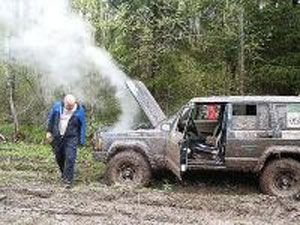
Antifreeze leaves the expansion tank usually in vehicles with a long service life or poor technical condition. But leakage of coolant (antifreeze) can also be observed in new vehicles. home reason for leaving antifreeze- this is the wear of car components, that is, pipes and hoses, or a marriage during their installation or replacement. Usually antifreeze leak it is difficult to notice, especially if a small amount of coolant leaves, because antifreeze has the ability to evaporate quickly. Immediately, the car owner can only detect a strong antifreeze leak, when the antifreeze leaves easily noticeable traces of moisture, up to puddles under the car, and a characteristic sweet smell appears. If you suspect coolant leakage, you need to control the volume of the expansion tank and the level of antifreeze consumption.
"Where does the antifreeze go?"- you can find the answer to this question by some specific features:
If antifreeze goes into the engine, for example, into the cylinders of the combustion chamber, then the smoke from the exhaust pipe becomes milky white due to the combustion of the coolant. Entry of antifreeze into the engine crankcase- the most unpleasant situation that can lead to engine damage. You can determine it by the appearance of a white emulsion on the oil filler cap.
Antifreeze can flow into the street - then characteristic puddles of a viscous liquid will be found under the bottom of the car.
A leak in the stove radiator is the main reason why antifreeze left the expansion tank to the salon. At the same time, the sweetish smell of hot coolant vapor is noticeable in the cabin.
Under the timing belt (timing) - this leak is not noticeable from the side, but the space under the belt cover will be dirty and wet. The reason for this leak is a broken pump.
Reasons why does antifreeze go away, are usually technical problems with car components. The pipes and connecting hoses of the internal system of the car during its operation are under high pressure of hot coolant. Therefore, with prolonged use, their integrity is violated, which leads to the flow of the cooler. If the connecting hose of the car has become unusable, it must be replaced. For crimping hose nozzles, it is better to use spring clamps, they hold the nozzle better and do not let liquid through. Another reason is a faulty radiator or water pump of the engine cooling system; in this case, only their replacement can eliminate the leak.
If antifreeze leaves– the engine may overheat, which will cause a long repair of the vehicle with a large amount of Money. This can be avoided by maintaining the technical condition of the car.
Do not forget to carry out a visual inspection of the car and the engine compartment before driving after a long parking of the car. Morning inspection will help to quickly detect an antifreeze leak, if any.




